Cari

【Japan】Hokkaido Asahiyama Zoo, Biei Blue Pond, Fairy Terrace Day Tour|Depart from Sapporo
Sapporo Station North Exit Group Bus Stop
Lihat Peta
Durasi Tur | 10 Jam 30 Menit










-
Belum ada review
Lihat Peta
Sapporo
Habis Terjual
Jelajahi Lainnya
Pengalaman yang Menunggumu
Kontak, Fasilitas, Bahasa Layanan, dan Info Lainnya
Kalau kamu ada pengalaman, tulis review, ya!
Review-mu akan berguna banget untuk orang lain yang lagi merencanakan liburan.
Jadwal Tur
•
08:00 Meet at the group bus stop at the north exit of Sapporo Station

•
10:30 Asahiyama Zoo【Ticket included】(Stay for about 110 minutes)*Includes lunch time at your own expense

•
10:30 Asahiyama Zoo closed: April 8, 2025 ~ April 25, 2025, November 04 ~ November 10, 2025. If Asahiyama Zoo is closed, the itinerary will be changed to: Biei Blue Pond (30 minutes) - Shirahige Falls (15 minutes) - Herbgarden (20 minutes) - Furano Grape and Fruit Research Institute (30 minutes) - Fairy Terrace (30 minutes). The tour guide will adjust the time of the attractions according to the weather conditions of the day and will appropriately extend or shorten the time of the attractions)
•
13:20 Biei Blue Pond
•
14:00 Biei Shirahige Falls
•
14:50 Pass by HERB GARDEN and receive a free hot drink from Hokkaido
•
15:50 Ningle Terrace (It is expected to be closed from November 3rd to November 28th, 2025; During this period, you will go to: Biei Shirogane Hot Spring** (90 minutes, at your own expense) 〒071-0235 Shirogane Hot Spring, Biei Town, Kamikawa-gun, Hokkaido If the zoo + Ningle Terrace are closed, the itinerary will be arranged according to the following attractions: Then the itinerary will be changed to: Biei Blue Pond (30 minutes) - Shirahige Falls (15 minutes) - Herbgarden (20 minutes) - Biei Shirogane Hot Spring** (90 minutes) **If the hot spring is closed, other hot springs in the Biei area will be replaced)
•
16:20 Return to downtown Sapporo, and end the day happily!
•
18:30 Arrive at the disbanding location: Sapporo Station North Exit Group Bus Stop
Lihat Jadwal Lengkap
Tentang 【Japan】Hokkaido Asahiyama Zoo, Biei Blue Pond, Fairy Terrace Day Tour|Depart from Sapporo
The content of this product is provided by machine translation and may not reflect the actual information, please take this into consideration before booking.
— Solution Introduction —
Hokkaido Asahiyama Zoo, Biei Blue Pond, and Fairy Terrace Day Tour
— Instructions for Use —
— Itinerary Introduction —
Asahiyama Zoo (approximately 110 minutes, including free time for lunch)
**Asahiyama Zoo is closed from April 8th to April 25th, 2025, and November 4th to November 10th, 2025. If the zoo is closed, the itinerary will be changed to: Biei Blue Pond (30 minutes) - Shirahige Falls (15 minutes) - Herbgarden (20 minutes) - Furano Grape and Fruit Research Institute (30 minutes) - Fairy Terrace (30 minutes). The tour guide will adjust the time of each attraction according to the weather conditions.
Description of attractions to visit when Asahiyama Zoo is closed:
Furano Grape and Fruit Research Institute - "Furano Wine" Made from Local Specialty Grapes (approximately 30 minutes) Half a century ago, in the 1960s, Furano had no grapevines other than wild grapes growing naturally in the mountains. Due to its similar climate and terroir to Europe, enthusiasm for winemaking in Furano grew, and the Furano City Grape and Fruit Research Institute was established to focus on cultivating wine grapes. Over 50 years have passed since its founding. During this time, many passionate individuals have participated in experimental research and production development, resulting in the widely loved Furano wine we enjoy today. While some wineries use imported grapes, Furano Wine remains true to its original mission of "promoting regional agricultural revitalization through winemaking" and continues to use grapes grown locally in Furano.
Biei Blue Pond Tour (approximately 30 minutes)
Biei Shirahige Falls Tour (approximately 20 minutes)
Pass by HERB GARDEN and receive a free Hokkaido hot drink (approximately 20 minutes)
Ningle Terrace (approximately 40 minutes)
**It is expected to be closed from November 3rd to November 28th in 2025. During this period, you will go to: Biei Shirogane Hot Spring** (90 minutes, at your own expense) 〒071-0235 Shirogane Hot Spring, Biei Town, Kamikawa County, Hokkaido
- If the Zoo and the Elf Terrace are closed, the itinerary will be arranged according to the following attractions: Then the itinerary will be changed to: Biei Blue Pond (30 minutes) - Shirahige Falls (15 minutes) - Herbgarden (20 minutes) - Biei Shirogane Hot Spring ** (90 minutes) ** If the hot spring is closed, other hot springs in the Biei area will be replaced
*The above itinerary times are all in Japan local time and are subject to local arrangements
- Kind tips-
1.
2.
3.
Yang Kamu Perlu Ketahui Juga
Frequently Asked Questions
Berapa lama durasi 【Japan】Hokkaido Asahiyama Zoo, Biei Blue Pond, Fairy Terrace Day Tour|Depart from Sapporo?
Durasi tour 【Japan】Hokkaido Asahiyama Zoo, Biei Blue Pond, Fairy Terrace Day Tour|Depart from Sapporo adalah 10 Jam 30 Menit. Untuk informasi lebih lengkap mengenai ketersediaan tanggal dan durasi untuk event tersebut, silahkan kunjungi halaman ini.
Informasi Umum 【Japan】Hokkaido Asahiyama Zoo, Biei Blue Pond, Fairy Terrace Day Tour|Depart from Sapporo
Durasi | 10 Jam 30 Menit. |
|---|---|
Alamat | Sapporo Station North Exit Group Bus Stop |
Kategori | Tur |
Detail Lokasi
Sapporo Station North Exit Group Bus Stop
Habis Terjual
Jelajahi Lainnya
Sering di pesan bersamaan
Aktivitas dan Wisata Menarik Lainnya
Produk Lainnya Di Hokkaido
JR PASS: Hokkaido Rail Pass, Sapporo-Noboribetsu or Sapporo-Furano Area Pass (E-Ticket)
Hokkaido: Asahiyama Zoo, Biei Blue and Ningle Terrace 1-Day Tour (Hokkaido Line A)
Tiket Kebun Binatang Asahiyama Hokkaido
Hakodate Airport, Shin-Hakodate Hokuto Station-Hakodate City Hotels|Charter Car Transfer Plan|Hakodate, Hokkaido
Have Fun in Hokkaido Pass
Tiket Menara Goryokaku Hokkaido
Tiket Kereta Gantung Gunung Moiwa Sapporo dan Kereta Kabel Mini
Tiket Dek Observasi Menara JR Sapporo T38
Hokkaido One-Day Tour: Toyako Onsen, Noboribetsu Jigokudani Valley, Showa Shinzan, & Lake Shikotsu with Optional Bear Ranch Package (Departure from Sapporo) | Japan
Hokkaido Furano Flower Fields Tour - 1 Day
Hokkaido Day Tour | Jozankei Hot Spring, Otaru, and Shiroi Koibito Park | Departure from Sapporo
[Guaranteed Departure for 1 Available | Early Bird Discount 45% OFF] Furano, Hokkaido 1-Day Tour: Farm Tomita - Irodori Field, Shikisai-no-oka in Biei, & Shirogane Blue Pond | Departure from Sapporo [Guaranteed Departure for Solo Traveler]
Hokkaido Jozankei Onsen Day Tour with Bus Transportation & Onsen Ticket
[Romantic tour] Hakodate 2-days tour | Hakodate Mountain Night View & Goryokaku Park & Hakodate Morning Market & Onuma Park & Kanemori Red Brick Warehouse (Sapporo departure) | Hokkaido, Japan
Traveloka Hokkaido 1-Day Ski Tour | Teine Skiing Lesson Day | Includes ski equipment, round-trip shuttle bus, Chinese-speaking ski instructor, and free photography service | Optional Self-Study Package (Guaranteed Departure for Solo Traveler from Sapporo)
Hokkaido Noboribetsu Date Jidaimura Village Tickets
Japan Hokkaido Charter Car | 1-day 10 Hours Customized Charter: Sapporo City, Furano, Lake Toya
& The Suburbs
Hokkaido Sapporo-Noboribetsu Area Pass
Hokkaido Kota Sapporo dan Pinggiran Kota 10 Jam Sewa Mobil dengan Pengemudi Berbahasa Mandarin
Otaru Kihinkan (The Old Aoyama Villa / Herring Goten Otaru) Admission Ticket | Hokkaido, Japan
Hokkaido Shakotan Day Tour | Shiroi Koibito Park & Otaru Canal & Shakotan Cape Kamui | Limited-time exploration of the island of Mui Coast or limited-time fruit picking in summer (depart from Sapporo)
Taman Beruang Noboribetsu Hokkaido
Tour Hokkaido: Noboribetsu, Lake Toya and Otaru Full-Day Tour - 1 Day
Hokkaido Otaru Private Tour | EBISUYA's Rickshaw Experience | 30/ 60 /120 min
Hokkaido 2-Day Tour | 10 Autumn Foliage Highlights in Daisetsuzan Asahidake & Kurodake, Sounkyo, Obako, and Biei (Departing from Sapporo)
Indonesia (Bahasa Indonesia)Indonesia (English)Global (English)Malaysia (English)Malaysia (Bahasa Malaysia)Philippines (English)Singapore (English)Thailand (English)ไทย (ภาษาไทย)Việt Nam (Tiếng Việt)Vietnam (English)Australia (English)South Korea (English)대한민국 (한국어)Japan (English)日本 (日本語)马来西亚 (简体中文)全球 (简体中文)
Info Umum
Itinerari
Pilihan Tiket
Tentang Produk Ini
Review
Yang Sering Ditanyakan

Produk
Copyright © 2025 Traveloka. All rights reserved


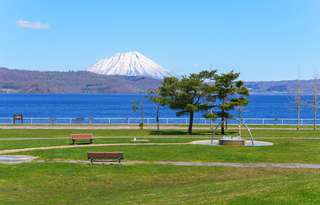
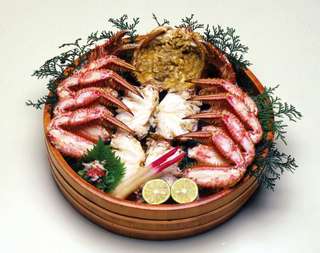

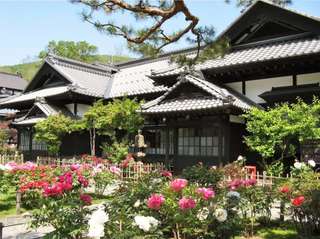

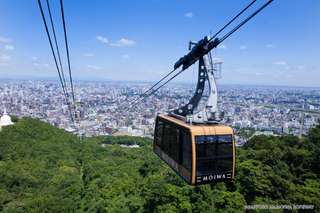

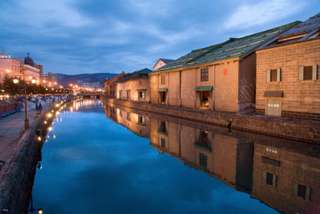
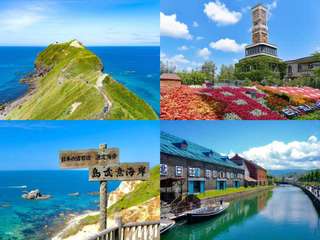
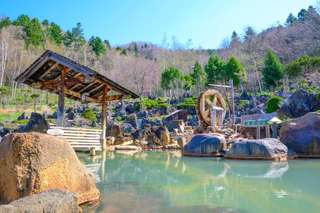

 Facebook
Facebook Instagram
Instagram TikTok
TikTok Youtube
Youtube Twitter
Twitter Telegram
Telegram WhatsApp
WhatsApp
